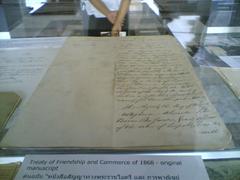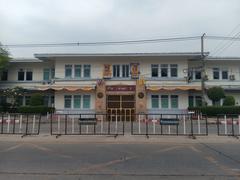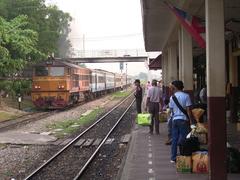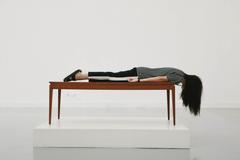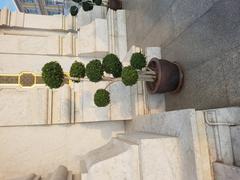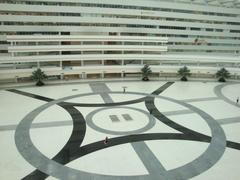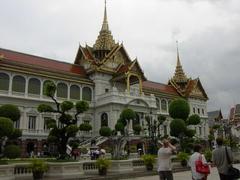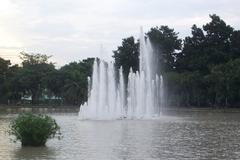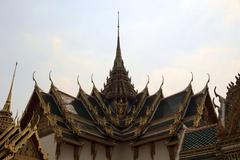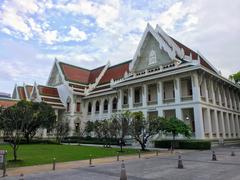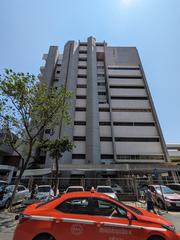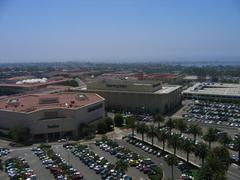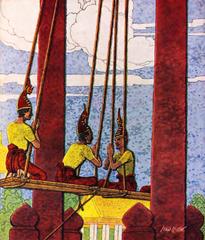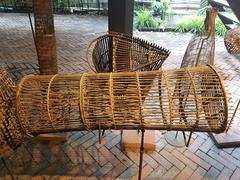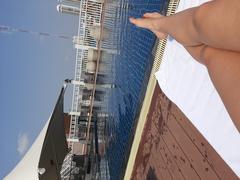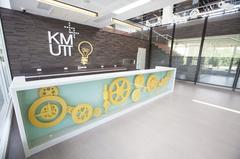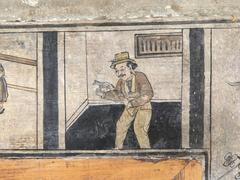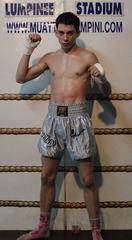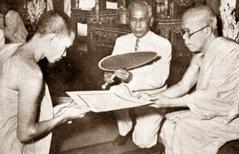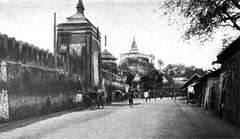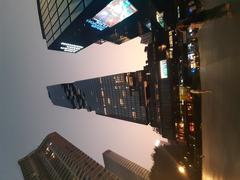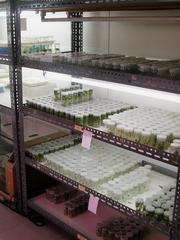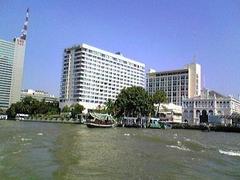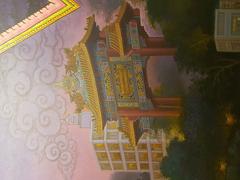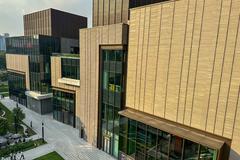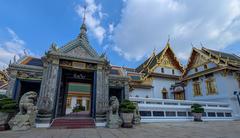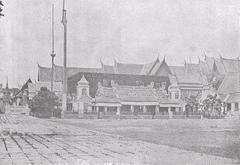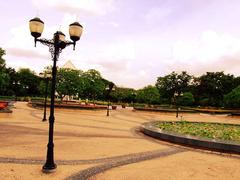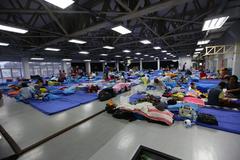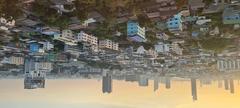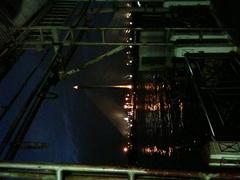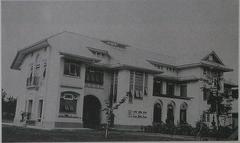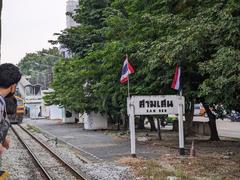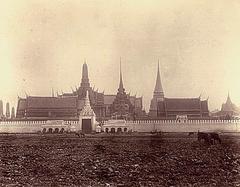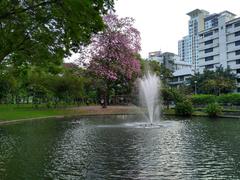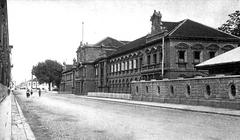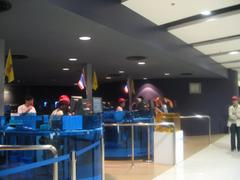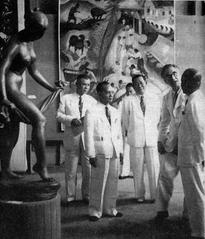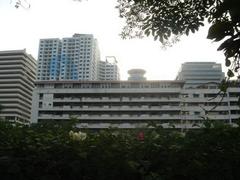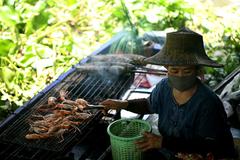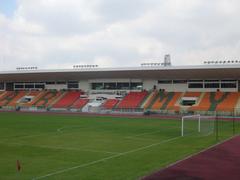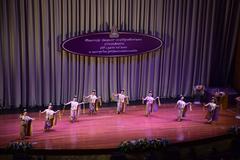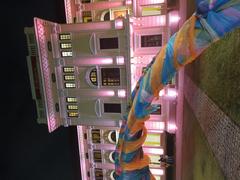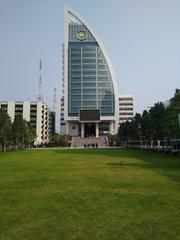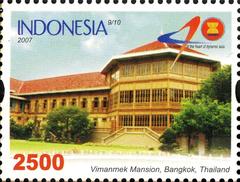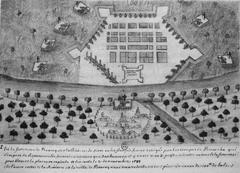Complete Guide to Wat Pho: Visiting Hours, Tickets, and Essential Tips for Bangkok’s Historic Temple
Date: 14/06/2025
Introduction
Wat Pho—officially Wat Phra Chetuphon Vimolmangkalaram Rajwaramahaviharn—is one of Bangkok’s most revered temples and a cornerstone of Thai culture. Globally renowned for its monumental Reclining Buddha and as the birthplace of traditional Thai massage, Wat Pho embodies centuries of Buddhist devotion, artistry, and educational innovation. This comprehensive guide details Wat Pho’s historical and cultural significance, essential visitor information (including opening hours and ticketing), accessibility, must-see highlights, major festivals, travel tips, and nearby attractions.
Historical and Cultural Significance
Origins and Historical Development
Wat Pho’s origins trace back to the 16th century, preceding Bangkok’s establishment as the Thai capital. The temple was extensively restored and expanded by King Rama I in 1788, establishing it as a center for royal religious ceremonies and the preservation of Thai knowledge. King Rama III later commissioned educational stone inscriptions throughout the grounds, establishing Wat Pho as Thailand’s first “open university” (What’s Home For You; Thailand Go To; One Day Thai).
Architectural and Artistic Heritage
Spanning 80,000 square meters, Wat Pho is among Bangkok’s largest temple complexes. Its design harmoniously blends Thai, Chinese, and Khmer influences, with over 1,000 Buddha images—many rescued from Ayutthaya—adorning its cloisters (Tourist Bangkok). The Reclining Buddha, measuring 46 meters long and 15 meters high, is gilded and features mother-of-pearl inlay on its feet, depicting 108 auspicious symbols (One Day Thai; What’s Home For You). The temple’s 99 chedis, including the four grand chedis honoring the first Chakri kings, are exquisitely decorated with vibrant tiles and floral motifs (Agoda Travel Guide).
Murals in the ordination hall and cloisters depict Buddhist cosmology, the Ramakien (Thai Ramayana), and scenes from historical Siamese life (One Day Thai).
Center of Learning and Thai Traditional Medicine
Wat Pho’s stone inscriptions, recognized by UNESCO’s Memory of the World Programme, cover Thai medicine, massage, and Buddhist teachings (One Day Thai). The Wat Pho Thai Traditional Medical and Massage School, founded in 1955, teaches and practices traditional Thai massage. Visitors can experience massages or enroll in short courses (Tourist Bangkok; Agoda Travel Guide).
Spiritual and Religious Importance
As a first-class royal temple, Wat Pho is an active hub for Buddhist worship. The main ordination hall (Ubosot) houses Phra Buddha Theva Patimakorn, believed to date from Ayutthaya and enshrining relics of King Rama I (Tourist Bangkok). The temple’s tranquil gardens, shrines, and meditation halls offer both monks and visitors a place for contemplation (What’s Home For You).
Cultural Fusion and Symbolism
Wat Pho’s gates are guarded by imposing Chinese statues, originally ship ballast, symbolizing the temple’s cultural blending (One Day Thai; Tourist Bangkok). The Khao Mor gardens feature statues demonstrating yoga and massage postures, reinforcing Wat Pho’s educational legacy (Tourist Bangkok).
Contemporary Significance
Wat Pho remains a living symbol of Thai national identity and a popular pilgrimage site (Agoda Travel Guide). Enhanced signage, guided tours, and digital resources have improved visitor engagement, while the temple continues promoting mindful, sustainable tourism (TravelSetu).
Visitor Information
Location & Getting There
Wat Pho is located in Bangkok’s Phra Nakhon district, next to the Grand Palace and near the Chao Phraya River. It’s easily reached by:
- BTS Skytrain: Saphan Taksin Station, then a Chao Phraya Express Boat to Tha Tien Pier, followed by a short walk.
- Taxi or Tuk-Tuk: Widely available throughout Bangkok.
- Public Bus: Numerous routes serve the area.
- On Foot or Bicycle: The old city’s flat terrain makes walking and cycling enjoyable.
Opening Hours
- Daily: 8:00 AM – 6:30 PM (last admission at 6:00 PM)
Tickets and Admission
- Foreigners: 200–300 THB (check for current pricing, which may vary year to year)—includes access to the Reclining Buddha and main complex. Complimentary bottled water may be provided.
- Thai Nationals/Residents: Free or discounted with valid ID.
- Purchase: Tickets available at the entrance; online sales are limited to authorized vendors.
- Guided Tours: Available onsite (group, private, and audio guide options).
Dress Code & Etiquette
- Shoulders and knees must be covered. Avoid sleeveless tops, shorts, or short skirts.
- Remove shoes before entering buildings.
- Speak quietly and avoid pointing feet at Buddha images.
- Photography is allowed in most areas (no flash or tripods inside halls; be respectful of worshippers and monks).
Wheelchair Accessibility
- Ramped access to most main areas; some historic sections have steps or uneven surfaces.
- Accessible restrooms are limited; assistance can be requested.
- Taxis or accessible boats are recommended for travelers with mobility needs (APieceOfTravel).
Must-See Highlights at Wat Pho
Reclining Buddha (Phra Buddhasaiyas)
- Size: 46 meters long, 15 meters high—one of Thailand’s largest Buddha statues.
- Features: Gold leaf finish; mother-of-pearl feet illustrating 108 auspicious symbols.
- Significance: Depicts the Buddha’s entry into Nirvana (thisisbangkok.com; ceochannels.com; preparetravelplans.com; momentslog.com).
Main Ordination Hall (Ubosot)
- Rattanakosin architectural style with ornate murals and a principal Buddha image.
- Active site for worship and royal ceremonies (mybangkokpass.com; momentslog.com).
Four Grand Chedis & Smaller Stupas
- Colorful tile mosaics dedicated to the first four Chakri kings.
- Surrounded by smaller chedis and statues (preparetravelplans.com).
Cloisters, Courtyards, and Gardens
- Over 400 Buddha images in Phra Rabieng galleries.
- Tranquil gardens, Chinese statues, bonsai trees, and Khao Mor rock gardens (ceochannels.com; thisisbangkok.com).
Thai Massage School
- Renowned globally as the birthplace of traditional Thai massage.
- Offers on-site treatments and short massage courses (thisisbangkok.com; mybangkokpass.com).
Murals, Inscriptions & Minor Halls
- Murals depict Buddhist cosmology, the Ramakien, and Thai folklore.
- Stone inscriptions cover medicine, science, and literature (momentslog.com; mybangkokpass.com).
Chinese Statues & Mythical Guardians
- Hundreds of stone figures, including gate giants and mythical creatures (preparetravelplans.com).
Major Festivals and Cultural Events
- Songkran (Thai New Year): April 13–15, with merit-making rituals and lively festivities.
- Loy Krathong: November, featuring lanterns and floating offerings.
- Makha Bucha & Visakha Bucha: Buddhist holy days with candlelit processions and chanting.
- Chinese New Year: Additional prayers and cultural events.
During festivals, arrive early for traditional ceremonies. For more event details, check the Official Wat Pho Website.
Practical Tips for Visiting Wat Pho
- Arrive Early/Late: Best to visit before 10:00 AM or after 4:00 PM to avoid crowds and midday heat.
- Hydration: Complimentary water is sometimes provided; bring your own to stay hydrated.
- Footwear: Wear comfortable shoes for extensive walking.
- Guides: Hiring a guide or using an audio guide enhances the experience.
- Nearby Luggage Storage: If combining visits, use facilities at nearby stations or hotels.
- Accessibility: Plan routes in advance, especially for those with mobility needs.
Notable Nearby Attractions
- Grand Palace & Wat Phra Kaew: Home to the Emerald Buddha, a short walk north.
- Wat Arun (Temple of Dawn): Across the river, accessible by ferry.
- Chao Phraya River: River cruises and express boats for city views.
- National Museum & Museum of Siam: For Thai history and interactive exhibits.
- Flower Market (Pak Khlong Talat): Vibrant 24-hour market nearby.
- Khao San Road: Famous for nightlife and street food.
- Day Trips: Ayutthaya (ancient ruins) and Ancient City (Muang Boran).
Accessibility Overview
- Wheelchair Users: Ramps and wide pathways in main areas; some halls have steps.
- Restrooms: Limited accessible facilities; nearby malls may offer better options.
- Transport: Consider taxis or accessible river boats; sidewalks may be uneven.
- Tips: Visit with a companion if assistance is required; early visits offer less crowded conditions (APieceOfTravel).
Frequently Asked Questions (FAQ)
Q: What are Wat Pho’s opening hours?
A: Daily from 8:00 AM to 6:30 PM, last admission at 6:00 PM.
Q: How much are tickets?
A: 200–300 THB for foreigners; free or discounted for Thai nationals with valid ID.
Q: Where can I buy tickets?
A: At the entrance; some authorized vendors offer online sales.
Q: Are guided tours available?
A: Yes, including group, private, and audio guide options.
Q: Is Wat Pho wheelchair accessible?
A: Main areas are accessible; some historic sections require steps or assistance.
Q: Can I take photos inside?
A: Yes, but avoid flash and respect worshippers and monks.
Visuals and Media
Browse official tourism websites and the Official Wat Pho Website for virtual tours and high-quality images. For SEO, use alt tags such as “Wat Pho Reclining Buddha at Bangkok historical site,” “Wat Pho visiting hours,” and “Wat Pho tickets.”
Summary and Final Tips
Wat Pho is a multi-layered cultural jewel—part temple, part university, and part living museum. Its grandeur, serenity, and educational role make it an essential Bangkok destination. Respectful dress, early arrival, and engagement with local guides will enhance your visit. Combine Wat Pho with neighboring attractions for a full day of exploration. For updates and interactive content, use the Audiala app.
Official Resources and Sources
- What’s Home For You
- Thailand Go To
- One Day Thai
- Agoda Travel Guide
- Tourist Bangkok
- TravelSetu
- CEO Channels
- PrepareTravelPlans
- MomentsLog
- APieceOfTravel
- Official Wat Pho Website
